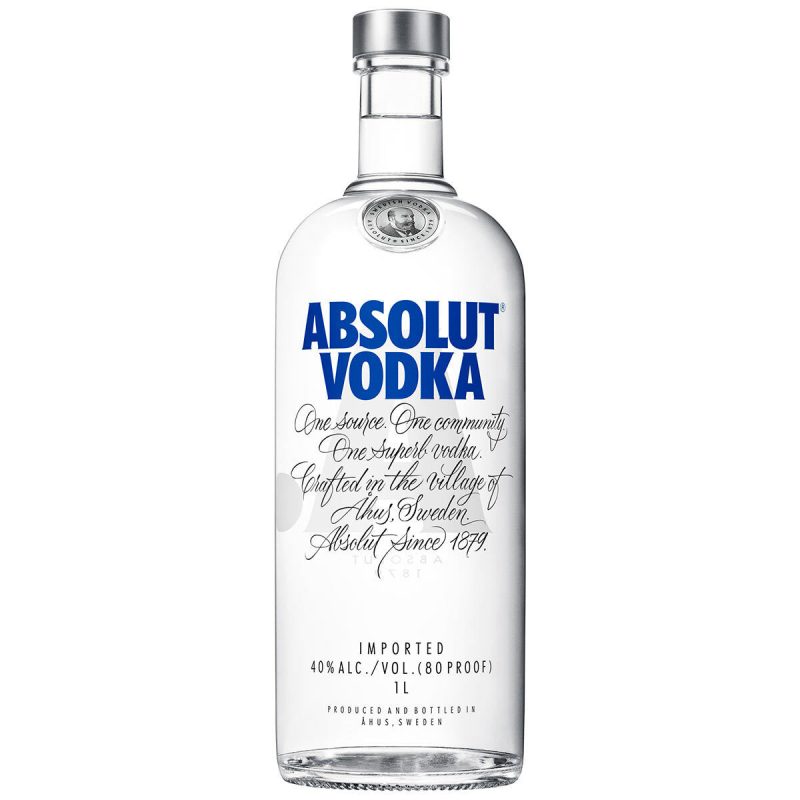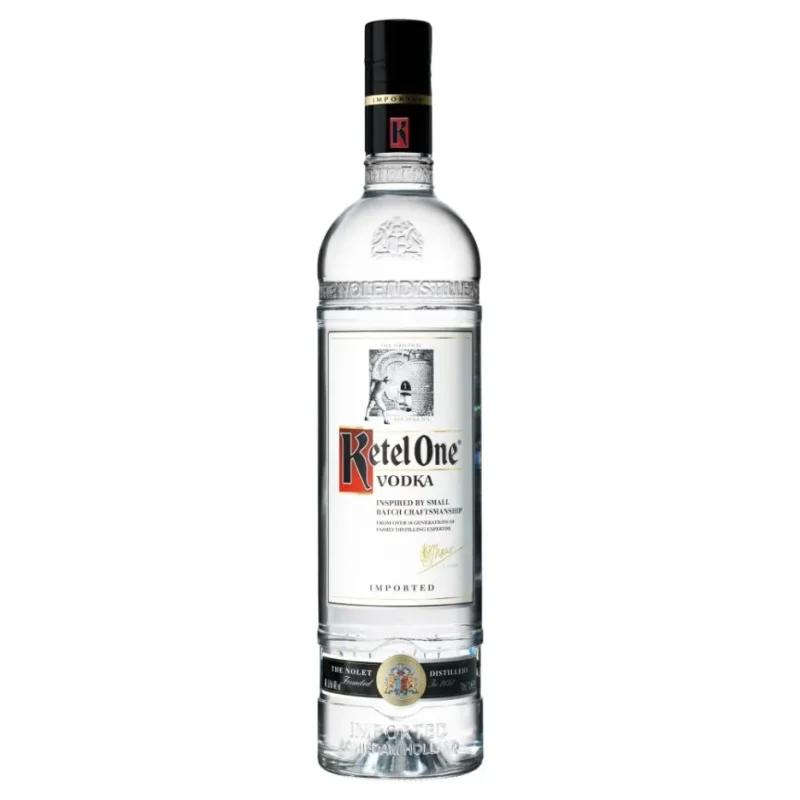Ever wondered if your favorite vodka is secretly harboring a tart side? Before you mix that cocktail, let's dive into the surprisingly intriguing world of vodka’s acidity. While vodka is often celebrated for its neutral palate and smooth finish, scientists and cocktail enthusiasts alike have been asking, “How acidic is vodka?” Get ready to sip on some science, mix in a few fun facts, and shake up your understanding of this timeless spirit.
How Acidic Is Vodka Table of Contents
Understanding Acidity: The pH Lowdown
The Vodka Craft: Distillation, Water, and a Dash of Chemistry
Unpacking the pH of Vodka: Debunking Myths and Revealing Facts
Health Implications: What Does Vodka’s Acidity Mean for Your Body?
Vodka vs. The Competition: Comparing Acidity Across Spirits
The Role of Infusions: When Vodka Gets a Flavor Makeover
Mixology Magic: Crafting Cocktails with Clarity
Flavor Nuances: How Acidity Can Affect Taste Perception
Digging Deeper: Scientific Studies and Industry Insights
The Cultural Journey of Vodka: From Eastern Roots to Global Cheers
Resources and Community Support: Your Next Steps
Frequently Asked Questions About Vodka’s Acidity
Your Journey Through the Acidic World of Vodka
Looking For The Best Vodka? You'll Love These Vodka Guides...
Understanding Acidity: The pH Lowdown
Before we unravel the mystery behind vodka’s acidity, let’s talk pH. In simple terms, the pH scale measures how acidic or alkaline a solution is, ranging from 0 (super acidic) to 14 (super alkaline), with a value of 7 being perfectly neutral. Most beverages have their own pH identity: citrus juices that zing come in well below 7, while water sits right at the center. So, where does vodka land on this scale? Spoiler alert: It’s not going to make your taste buds cringe with sourness.
In the world of spirits, especially for a clear, distilled drink like vodka, the pH balance is crucial because it affects everything from flavor to stability and even your cocktail’s overall vibe. A ballpark figure for most vodkas is hovering near neutrality – think somewhere around 7 – but subtle variations can and do occur. The depth of these differences depends on the water used in its production, any additives, and even the distillation methods.
So whether you’re a science nerd, a mixology maven, or simply someone who loves a good drink, understanding pH is your first step into decoding the enigma that is vodka acidity. After all, life’s too short for boring buzzwords.
The Vodka Craft: Distillation, Water, and a Dash of Chemistry
Vodka isn’t just born overnight in a back alley lab; it’s meticulously crafted. The journey from grain (or potato, grape, or even beet) to your bottle involves fermentation, filtration, and distillation. Each step in this process influences the final character of the spirit, including its acidity.
During fermentation, sugars are converted into alcohol by yeast—a process that produces a cocktail of by-products including various organic acids. However, the real magic lies in the distillation stage, where most impurities, including the excess acidity, are removed. The final spirit is a near-pristine ethanol-water solution that retains only the essence of its original character.
Best Budget Vodkas Ranked
One could say that vodka is the minimalist of liquors. Distillers aim for a clean, crisp product with as little flavor interference as possible, which is why vodka’s pH levels tend to hover around neutrality. The quality of water used during production plays a starring role too. Some vodkas are made with water filtered through glacial sources, while others rely on municipal water supplies with slight mineral variations. These nuances can subtly affect the pH, but rarely do they push vodka into extreme acidic or alkaline territory.
In essence, the distillation process is like editing a blockbuster movie: it cuts out the excess and leaves you with a refined, compelling performance. In vodka’s case, you get a spirit that’s mostly neutral in pH, with just enough character to mix a mean cocktail.
Unpacking the pH of Vodka: Debunking Myths and Revealing Facts
Let’s get to the heart of the question: How acidic is vodka? The general consensus among experts is that pure vodka tends to have a pH level very close to 7 – meaning it is nearly neutral. However, slight deviations can occur depending on the production techniques, the source water, and any flavoring or additives the barman might sneak in post-distillation.
Some enthusiasts believe that all alcoholic beverages are inherently acidic, citing wines and beers as prime examples. But here’s where vodka stands apart: Unlike wine, which harnesses a natural tang from its fermentation process, vodka is all about the clean slate. Its neutral pH is one of the reasons it’s a favorite base for cocktails, enabling a balanced canvas upon which other flavors can dance.
Yet, there’s a twist. Some artisanal and craft vodkas tout subtle flavor nuances that may come from the bottling process, slight mineral content variations in the water, or even from innovative infusions. While these factors might nudge the pH ever so slightly, you’re unlikely to experience any sour surprise when sipping a quality vodka.
Bottom line? In most cases, your go-to vodka is not acidic in a way that you'd find, say, in a lemon squeeze. Instead, its near-neutral pH lets it shine in cocktails where other ingredients—like tart citrus or bitter botanicals—take center stage.
Health Implications: What Does Vodka’s Acidity Mean for Your Body?
Now that we’ve charted the pH waters, let’s chat about what all this means for you and your bod. For many, the acidity of a beverage can influence digestion and overall comfort. Acidic drinks, like citrus juices or sodas, have the potential to trigger acid reflux or irritate a sensitive stomach if consumed in excess. So, should you be worried about vodka?
Fortunately, given vodka’s nearly neutral pH, it typically doesn’t come with the same digestive red flags as more acidic fare. That said, moderation is always key. While a neat vodka shot may not unsettle your stomach, loading up on cocktails loaded with acidic mixers can tip the balance. The real culprit isn’t the vodka itself, but the combined acid profile of the other ingredients.
Research indicates that moderate alcohol consumption can be part of a balanced lifestyle, assuming you’re not going overboard. Vodka’s neutrality means that, in isolation, it straddles the line between gentle and potent. But mix it with too many acidic juices or sodas, and you might just cook up a recipe for gastric turmoil.
So while vodka might not be a stomach gobbler on its own, the company it keeps in your cocktail shaker certainly matters. Keep an eye on your mixers, and your gut will thank you for it.
Vodka vs. The Competition: Comparing Acidity Across Spirits
Let’s put vodka in the ring with its fellow spirits. When it comes to acidity, not all alcoholic beverages are created equal. Wine, for instance, is known for its tangy profile thanks to the grape fermentation process, often sporting a pH that can dip into the acidic zone. Beer, too, tends to lean more acidic, which contributes to its characteristic flavor and mouthfeel.
Vodka, however, is the Zen master of the alcoholic world. Its meticulous distillation process nearly eliminates any harsh acidic notes, resulting in a spirit that’s smooth enough to sip straight but versatile enough to serve as a blank canvas in cocktails. This means that when you’re making a Bloody Mary or a Moscow Mule, vodka’s neutrality allows the other ingredients—like tomato juice or ginger beer—to really hold their own.
In some cases, rum and tequila might have their own unique acid profiles that complement their distinct flavors. But if your cocktail mantra is about precision and purity, vodka’s near-neutral pH is a major win. For those who appreciate a spirit that won’t dominate the drink’s overall taste, vodka stands as a testament to both art and science.
It’s a bit like comparing a blank vinyl record that lets the DJ’s beats shine versus a track that's heavy on reverb. Vodka gives the mix the perfect balance, ensuring that every other ingredient gets its moment in the spotlight.
The Role of Infusions: When Vodka Gets a Flavor Makeover
While traditional vodka is typically unflavored and near-neutral, the rise of artisanal infusions has given this classic spirit a flavor upgrade. Think cucumber, garlic, or even chili-infused vodka—each one adding layers of taste that can veer from the sweet and savory to the bold and unexpected.
These flavor infusions usually involve adding fruits, herbs, or spices to the raw spirit and letting them steep. The process can introduce subtle changes to the chemical composition, including shifts in the acid profile. However, the base of the vodka remains largely intact. So even though your jalapeño-infused vodka might have a playful kick, its overall pH will not stray dramatically from that nearly neutral zone.
The infusion process is where creativity meets science. Experimenting with different ingredients can subtly tweak not only the flavor but also the acidity, enhancing the cocktail's complexity. It’s like giving your drink an Instagram-worthy makeover that still preserves its inner core.
For those who consider themselves liquid alchemists, the interplay of infusion ingredients and vodka’s inherent neutrality opens a world of possibilities. Just remember to measure your infusions carefully—after all, balance is key both in chemistry and in life!
Mixology Magic: Crafting Cocktails with Clarity
There’s an art to mixing cocktails, and nothing should be left to chance—especially when you're dealing with perfect pH levels. Vodka’s near-neutrality not only makes it a great standalone spirit, but it also serves as an excellent base for a wide range of cocktails.
Consider classics like the Vodka Martini or the Cosmopolitan. In these drinks, vodka provides a smooth, unobtrusive canvas that lets the supporting cast shine. The acidity of side ingredients—like fresh lime juice in a Cosmopolitan or the delicate twist of an olive brine in a Martini—creates a dynamic duet that plays off vodka’s inherent simplicity.
Bartenders spend years perfecting the balance between sweetness, acidity, and bitterness. With vodka’s stable pH, the other players in the cocktail get a chance to rock their natural flavors. It’s like having a DJ that sets the perfect background beat while the star performers take the stage.
And if you’re feeling adventurous, you might even try your hand at creating your own cocktail masterpieces at home. Experiment with various mixers, infusions, and fresh ingredients. Just keep in mind that when it comes to acidity, moderation is key—both in your cocktails and in your humor.
Flavor Nuances: How Acidity Can Affect Taste Perception
Have you ever noticed how a slight squeeze of lemon can totally transform a drink? That’s the power of acidity at work. Acidity doesn’t just affect pH—it also plays a huge role in dictating how flavors are perceived. In cocktails, a touch of acidity can brighten flavors, create balance, and even cut through sweetness, lending a crisp edge to every sip.
In vodka-based drinks, the near-neutral pH means that you’re not going to get an overtly tangy taste intrusion from the vodka itself. Instead, the real flavor drama unfolds when acidic mixers join forces with vodka. Imagine a zesty lime or a tart cranberry juice dancing harmoniously with a chilled bottle of vodka. The result? A cocktail that’s as balanced as it is bold.
This subtle interplay is what makes vodka the unsung hero of mixology. It supports the dramatic roles played by herbal, citrusy, and even bitter ingredients without stealing the spotlight. So next time you sip on a perfectly crafted cocktail, take a moment to appreciate how the delicate balance of acidity orchestrates a symphony of flavors in your glass.
And if you ever find yourself in a debate about whether vodka can be “too neutral,” just remind your friends: sometimes, less is more—and in the right cocktail, that neutral stage is exactly what allows the other stars to shine.
Digging Deeper: Scientific Studies and Industry Insights
If you consider yourself a curious cocktail connoisseur, you’re in for a treat. Scientific studies into the chemical properties of vodka have revealed fascinating insights into its production and composition. Experiments measuring the pH of various vodka brands have consistently shown a narrow range of near-neutral values, which is a testament to the rigorous distillation and filtration techniques employed by distillers worldwide.
Industry experts note that despite minor variations in mineral content or residual compounds, the overall acidity of vodka remains steady—and that is by design. By maintaining a near-neutral pH, distillers ensure that vodka remains versatile, stable, and adaptable to any cocktail recipe.
Additionally, this consistency is essential for maintaining the integrity of infused vodkas and other flavored variants. The slight tweaks in acidity that may arise during the infusion process are carefully controlled, ensuring that each bottle delivers the intended flavor profile without straying into sour territory.
For those who love a blend of science and spirits, this balance between artistry and precision is what makes the vodka industry so captivating. Whether you’re analyzing the latest research or simply enjoying a well-mixed drink, it’s clear that your liquid libation is supported by a foundation built on meticulous craftsmanship and scientific insight.
The Cultural Journey of Vodka: From Eastern Roots to Global Cheers
As we explore the science behind vodka’s acidity, it’s worth taking a moment to appreciate the rich cultural history behind this spirit. Originating in Eastern Europe, vodka has journeyed from humble beginnings to become a global icon, celebrated for its purity and adaptability. Its cultural evolution is as layered as the finest cocktail, blending tradition with modern innovation.
The historical narrative of vodka is a tale of resilience and reinvention. In the early days, local distillers crafted vodka using traditional methods that prized simplicity and natural ingredients. As production techniques evolved, the emphasis shifted to achieving a spirit that was as consistent as it was versatile—ideal for both neat sipping and inventive cocktail concoctions.
This global renaissance has resulted in a vibrant scene where traditional methods mesh seamlessly with cutting-edge technology. Today’s distillers experiment with everything from unique grain blends to innovative filtration systems, all while ensuring that the integrity of vodka’s nearly neutral pH remains intact.
So, the next time you enjoy a vodka cocktail, raise a glass not just to your impeccable taste, but also to the centuries of tradition and modern mastery behind every drop. After all, every sip of vodka is a nod to an incredible journey of culture, science, and creativity.
Resources and Community Support: Your Next Steps
As you continue your adventure into the world of vodka—and perhaps even experiment with your own cocktail recipes—don’t forget that you’re not alone. There’s an entire community of mixologists, enthusiasts, and curious minds ready to share tips, tricks, and insights on everything from pH levels to palate pleasures.
Join online forums, follow influential bartenders on social media, and subscribe to newsletters that spotlight the latest trends in craft cocktails and distillation science. These communities frequently host virtual tastings, Q&A sessions, and hands-on workshops where you can learn more about the delicate interplay of chemistry and craft.
Whether you’re an aspiring bartender, a science enthusiast, or simply someone who loves a good drink, tapping into these resources can elevate your appreciation of vodka. Empower yourself with knowledge, share your experiments, and most importantly—celebrate the spirit that brings people together across continents and cultures.
Your journey into understanding the intricacies of vodka’s acidity is only just beginning. So, explore, experiment, and engage with a community that’s as passionate about great drinks as you are. Cheers to discovery, creativity, and the endless possibilities of what you can craft in your home bar!
Frequently Asked Questions About Vodka’s Acidity
Still curious? Here are some of the most common questions we get about vodka’s acidity—and the answers might just surprise you.
1. How acidic is vodka compared to other spirits?
Most vodkas have a pH that is nearly neutral, typically around 7. This is in contrast to beverages like wine or beer, which tend to be more acidic. Vodka’s clean and refined distillation process helps maintain its balanced pH.
2. Can the slight variations in vodka’s pH affect its taste?
Minor variations in pH can influence flavor, but for quality vodka, these differences are subtle. The near-neutral pH allows vodka’s smooth character to serve as a perfect base in cocktails without overpowering other ingredients.
3. Does the water used during production change the acidity level of vodka?
Yes, the source and quality of water can affect the final product. Distillers often use water with specific mineral content to achieve a desired flavor profile, which can result in slight shifts in pH. However, these changes are generally minimal.
4. How do infusions affect the acidity of vodka?
Infused vodkas can experience slight changes in pH depending on the ingredients used. For example, citrus or berry infusions may introduce a tad more acidity, but the base spirit’s near-neutral pH usually prevails.
5. Is vodka’s pH a factor in its health impact?
Since vodka’s pH is nearly neutral, it is less likely to cause the stomach discomfort sometimes associated with more acidic drinks. However, the mixers and additional ingredients in cocktails can change the overall acidity of your drink.
6. Can I measure the pH of vodka at home?
Yes, with a digital pH meter or pH test strips available online, you can experiment and measure the pH of your vodka. Just remember that factors like temperature can affect the reading.
7. What scientific techniques are used to determine vodka’s pH?
Laboratories use digital pH meters and sophisticated titration methods to accurately determine the pH of vodka. These techniques ensure that the measurements are precise and reproducible.
8. Why is a near-neutral pH important for vodka?
A near-neutral pH is key to maintaining vodka’s clean and versatile character, making it ideal for cocktails where balance is essential, and allowing other flavors to shine.
Your Journey Through the Acidic World of Vodka
There’s a lot more than meets the eye when it comes to understanding vodka’s acidity. From the science of distillation and the humble pH scale to the artistry of cocktail mixology and flavor infusion, every aspect of vodka production is a blend of precision, creativity, and tradition.
This journey isn’t just for the lab-coated scientists or the seasoned bartenders—it’s for anyone who’s ever enjoyed a well-crafted cocktail or wondered about the secrets behind their favorite spirit. Understanding how acidic (or not) your vodka is adds a whole new layer of appreciation to that next-to-perfect drink.
So the next time you order a vodka cocktail or crack open a new bottle at home, you can do so with the confidence of knowing you’re indulging in a spirit that’s been engineered for balance, made to mix effortlessly, and designed to enhance every moment of your celebration. It’s a testament to the power of science meeting art—a reminder that even something as seemingly simple as vodka holds a universe of stories, techniques, and flavors waiting to be explored.
Raise your glass, toast to curiosity, and dive deeper into the fascinating world of vodka. Whether you’re experimenting with new cocktail recipes or just enjoying a quiet evening, let your newfound knowledge elevate your experience. After all, life is infinitely more interesting when you know what’s shaking inside your glass.
















